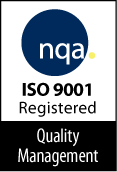As part of the eclipse commitment to quality, we submit to annual audits from a third-party auditing firm to review our deliverables and Quality documents each year. This is the first in a two-part series conducted by Kristie Lively, Vice President, Clinical Operations & Quality Compliance with a lead auditor from our selected firm – Kris Erickson, NQA USA.
What are the benefits to a company obtaining ISO registration?
The benefits of ISO registration go beyond a nice certificate hanging on your wall. Preparing for ISO registration involves an intensive team effort by all company employees, and leads to improvements to your business that are far more important than a framed piece of paper stating that you are certified.
ISO-certified companies see the following potential benefits:
- Increased efficiency in their operations
- Cost savings from reduced product rejects, and fewer warranty claims
- Continual improvement of their products and services
- Increased traceability and accountability throughout the organization
- Improved client satisfaction
- Improved competitive positioning in their industry
- Recognition by suppliers and clients that they have a first-class quality management system
Sometimes I explain the ISO9001 standard to people this way: “These are the things any successful company should be doing, but the fact that it is now required, and that the company is audited regularly, means these things happen on a consistent basis.”
What are the biggest challenges organizations face when they initially begin the ISO registration process?
You know, sometimes we get calls from companies that would like to become ISO registered, and after a few questions we realize they are just not ready. I think companies underestimate the effort involved in preparing for a registration audit if they are not familiar with the process.
But there is help! There are many highly qualified industry consultants who will guide a company through the process.
NQA also offers an optional pre-assessment to help companies identify the areas that need work.
Our registration process is two-stage. At the Stage 1 audit, problems that could cause a failure of Stage 2 are identified. So companies have a chance to get things in order before the “real” audit at, Stage 2.
What are some common mistakes made by organizations when trying to implement the standards?
As the ISO 9001 Standard has evolved, there has been less and less of a focus on the quantity of documentation. The previous version of the Standard, released in the year 2000, required the company to have documented procedures for twenty different activities within the business. The current version, 2008, requires six documented procedures. The motivation behind this reduction is to allow the company to define the efficiencies that match its business case. We auditors now spend time understanding the business process and trace it through specific scenarios to assure that the company followed its procedures consistently. So the idea that more procedures are better is a thing of the past. More documentation does not equal more quality.
What process or organizational change makes the greatest impact on quality output for companies?
One is corrective action. A robust corrective action process means that companies are finding the true root cause behind problems that arise. They find methods for containing the immediate problem, then creating a fix that will prevent the same problem from happening again, and a plan to check for effectiveness of that fix in the future.
I also believe setting quality objectives is important. High-level management must zero in on the few key indicators of quality, set goals, communicate them, measure and track them, and react quickly if anything goes awry. Again, something any successful company should be doing, but with ISO9001 it becomes mandatory.

